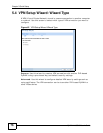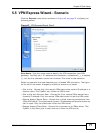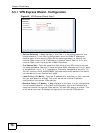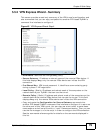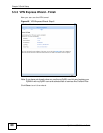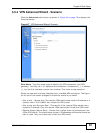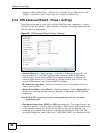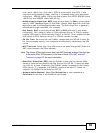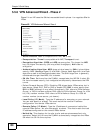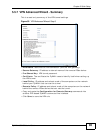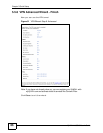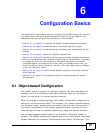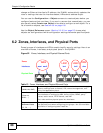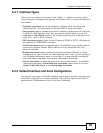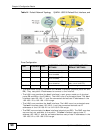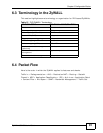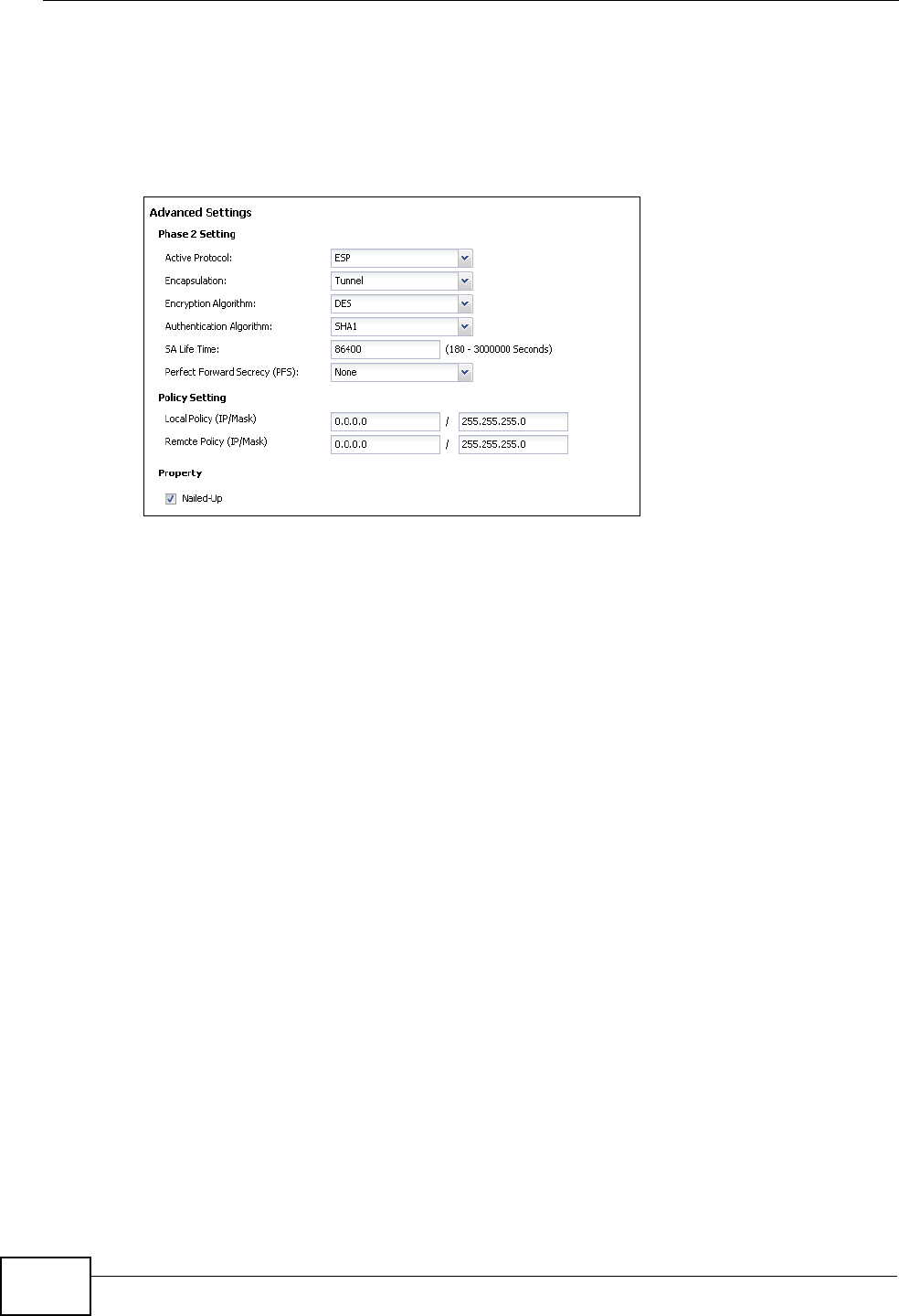
Chapter 5 Quick Setup
ZyWALL USG 50 User’s Guide
84
5.5.6 VPN Advanced Wizard - Phase 2
Phase 2 in an IKE uses the SA that was established in phase 1 to negotiate SAs for
IPSec.
Figure 49 VPN Advanced Wizard: Step 4
• Active Protocol: ESP is compatible with NAT, AH is not.
• Encapsulation: Tunnel is compatible with NAT, Transport is not.
• Encryption Algorithm: 3DES and AES use encryption. The longer the AES
key, the higher the security (this may affect throughput). Null uses no
encryption.
• Authentication Algorithm: MD5 gives minimal security. SHA-1 gives higher
security. MD5 (Message Digest 5) and SHA1 (Secure Hash Algorithm) are hash
algorithms used to authenticate packet data. The SHA1 algorithm is generally
considered stronger than MD5, but is slower.
• SA Life Time: Set how often the ZyWALL renegotiates the IKE SA. A short SA
life time increases security, but renegotiation temporarily disconnects the VPN
tunnel.
• Perfect Forward Secrecy (PFS): Disabling PFS allows faster IPSec setup, but is
less secure. Select DH1, DH2 or DH5 to enable PFS. DH5 is more secure than
DH1 or DH2 (although it may affect throughput). DH1 refers to Diffie-Hellman
Group 1 a 768 bit random number. DH2 refers to Diffie-Hellman Group 2 a 1024
bit (1Kb) random number. DH5 refers to Diffie-Hellman Group 5 a 1536 bit
random number (more secure, yet slower).
• Local Policy (IP/Mask): Type the IP address of a computer on your network.
You can also specify a subnet. This must match the remote IP address
configured on the remote IPSec device.
• Remote Policy (IP/Mask): Type the IP address of a computer behind the
remote IPSec device. You can also specify a subnet. This must match the local
IP address configured on the remote IPSec device.
• Nailed-Up: This displays for the site-to-site and remote access client role
scenarios. Select this to have the ZyWALL automatically renegotiate the IPSec
SA when the SA life time expires.



